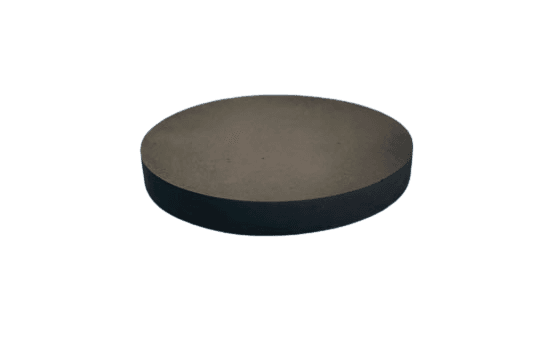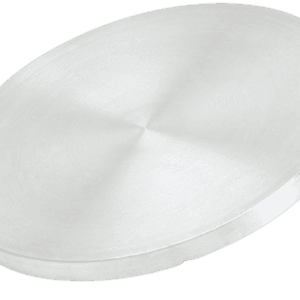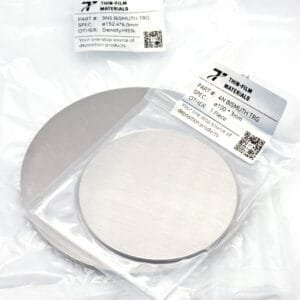| Material Type | Lithium Nickel Manganese Cobalt Oxide |
| Symbol | LiNi0.33Mn0.33Co0.33O2 |
| Color/Appearance | Black, Solid |
| Melting Point (°C) | N/A |
| Theoretical Density (g/cc) | 4.80 |
| Water Solubility | Insoluble |
| Sputter | RF, RF-R, DC |
| Max Power Density* (Watts/Square Inch) | N/A |
| Type of Bond | Indium, Elastomer |
Lithium Nickel Manganese Cobalt Oxide Sputtering Targets
Overview
Lithium Nickel Manganese Cobalt Oxide sputtering targets (LiNi₀.₃₃Mn₀.₃₃Co₀.₃₃O₂), commonly known as NMC sputtering targets, are high-performance materials used in semiconductor, CVD, PVD, display, and optical applications. Their unique composition allows them to be utilized in a variety of advanced thin film deposition processes, providing high-quality coatings and films with precise control over the material properties.
Lithium Nickel Manganese Cobalt Oxide Sputtering Targets Information
- Purity: 99.9%
- Circular: Diameter ≤ 14 inch, Thickness ≤ 15 mm
- Block: Length ≤ 120 ±0.1 mm, Width ≤ 120 ±0.1 mm, Thickness ≤ 15 mm
More Information on Lithium Nickel Manganese Cobalt Oxide Sputtering Targets
Applications
- Semiconductor Manufacturing
- Chemical Vapor Deposition (CVD)
- Physical Vapor Deposition (PVD)
- Display & Optical Applications
Features
- High Density: Provides robust performance and stability in sputtering applications.
- Stoichiometric Composition: Ensures accurate film deposition with consistent properties.
- Electrically Conductive at Room Temperature: Suitable for various electrical applications and processes.
- Phase Pure: Guarantees the deposition of high-quality, phase-pure thin films.
Manufacturing Process
- In-House Powder Synthesis: High-purity metal oxide precursor materials are synthesized with high-energy mixing and particle sizing.
- Multiple Step Densification: Proprietary processes are employed for pressing and sintering to achieve optimal density and material properties.
- Cleaning & Final Packaging: Targets are cleaned to meet vacuum use standards and carefully packaged to prevent contamination during shipment.
Options Available
- 99.9% Minimum Purity: Ensures high-quality material for critical applications.
- Custom Compositions: May be available upon request to meet specific needs.
- Smaller Sizes for R&D: Available for research and development applications to support experimentation and innovation.
- Sputtering Target Bonding Service: Target bonding services are offered to enhance stability and performance.
For further information or inquiries, please reach out to us directly.





Reviews
There are no reviews yet.